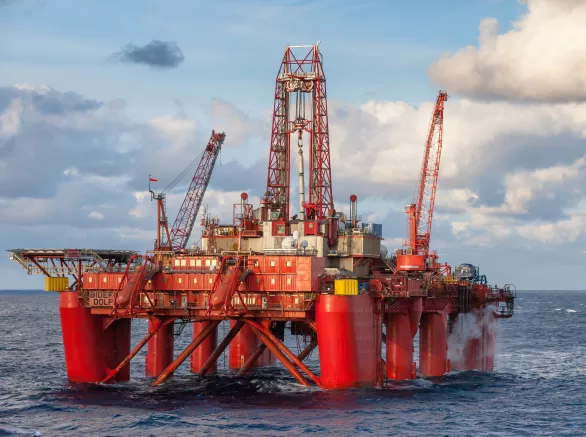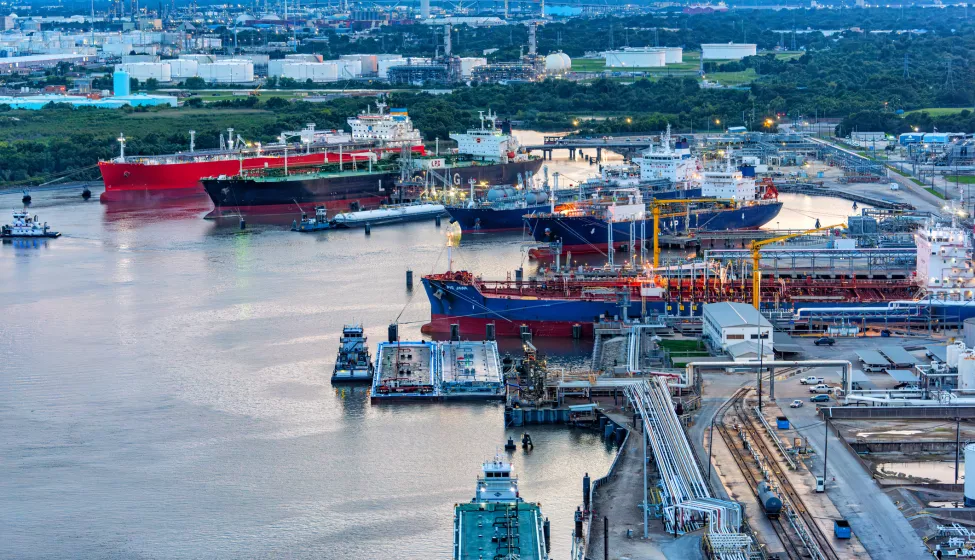May 20, 2025
The Pipeline and Hazardous Materials Safety Administration is seeking feedback on new regulations to modernize LNG facility design and operations
Every day, the U.S. ships 12 billion cubic feet of liquefied natural gas (LNG) overseas. The facilities responsible for liquefying, storing, and pumping that natural gas into container ships were mostly built and designed to operate under regulations last updated in 2004.
Now, the Pipeline and Hazardous Materials Safety Administration (PHMSA) is seeking stakeholder feedback on a new set of proposed rules that could make operating terminals and shipping LNG easier for producers. These same rules could also make it easier for utilities to build new LNG facilities across the U.S.
PHMSA announced the Advance Notice of Proposed Rulemaking (ANPRM) April 29, stating that the organization is striving to "update decades old regulations for liquefied natural gas (LNG) facilities, fast-track new LNG infrastructure projects, expand domestic export capacity, and grow the small-scale LNG market."
Since the last update to LNG rules in 2004, the industry has grown tremendously. Today, U.S. LNG exports are surging, with more than 34.6 million metric tons exported in the first four months of 2025. Most was shipped to Europe to compensate for the loss of Russian natural gas imports. As the PHMSA ANPRM notes, "The U.S. LNG industry has become truly global in scale and geopolitical importance; the sophistication of technology and operating practices within LNG facilities regulated by PHMSA have similarly evolved at a breakneck pace."
U.S. utilities are also increasingly using peak shaving LNG facilities to help offset peak demand. Natural gas from pipelines is liquefied in small-scale facilities and stored in cryogenic tanks to meet greater demands for gas.
Because of these rapid developments in LNG, PHMSA is seeking to revise regulations around several key areas of LNG production, storage, and transport:
- Facility siting requirements from the 2001 edition of NFPA 59A Standard for the Production, Storage, and Handling of Liquefied Natural Gas (LNG) may be updated to those of the 2023 edition.
- New reliance on the 2023 edition of NFPA 59A may permit performance-based LNG plant siting using quantitative risk analysis (QRA), instead of the current prescriptive requirement approach.
- Other consensus standards may be considered for facility siting requirements.
- PHMSA may revisit the consequence modeling requirements for potential flammable or toxic release scenarios.
Five LNG export projects are currently under construction in the U.S. — Plaquemines (Phase I and Phase II), Corpus Christi Stage III, Golden Pass, Rio Grande (Phase I), and Port Arthur (Phase I) — and North America's LNG export capacity is set to more than double between 2024 and 2028. There are also around 80 peak shaving facilities in operation in the U.S. Many LNG facilities have been constructed under the previous regulations and continue to operate under aging safety standards.
Industry stakeholders have until July 7 to offer feedback to PHMSA regarding these regulations, their feasibility, and the potential costs of implementing them. It is crucial for LNG industry stakeholders to review the proposed regulations and submit feedback to help streamline the process and make liquefying, storing, and transporting LNG safer and more efficient in the future.
What Can We Help You Solve?
Exponent has helped shape safety, design, and construction standards for LNG facilities for over 40 years. Using a broad range of environmental, safety, and design analyses and tools, we have helped LNG producers conduct facility siting studies for more than a decade.
![Liquefied Natural Gas (LNG) [TS]](/sites/default/files/styles/cards_home_card/public/media/images/GettyImages-854095408.jpg.webp?itok=hoWL7ZTm)
Liquefied Natural Gas
Consulting services for the safe handling, transportation, and storage of liquefied natural gas (LNG).

Regulatory & Compliance
Get the technical guidance you need to improve product safety and meet regulatory compliance across all industries.

Thermal Sciences Expertise for Disputes
Evidence-based scientific insights and expert witness support for industrial fires and explosions, oil and chemical spills, and equipment failures.

Thermal Sciences Expertise for Energy Systems
Energy systems design, safety, and compliance consulting across a range of industries, including oil and gas, renewable and utility power generation.
![Computational Modeling [TS]](/sites/default/files/styles/cards_home_card/public/media/images/GettyImages-182174791.jpg.webp?itok=kmskqW9J)
Computational Modeling; Thermal Sciences
A less expensive and faster alternative to thermal or flow experiments.
Insights





